3D printer metal | Amazing Possibilities
- Details
- Hits: 20791
The Metal 3D printer moves more and more into production. Instead of waiting days or weeks for traditional machining, metal parts can now be machined almost instantly in hours and without additional Tools 3D print. Precision parts and assemblies can be manufactured quickly and inexpensively. The article presents novelties and applications of 3D printing for Metals before like the first steel engine in just one component.
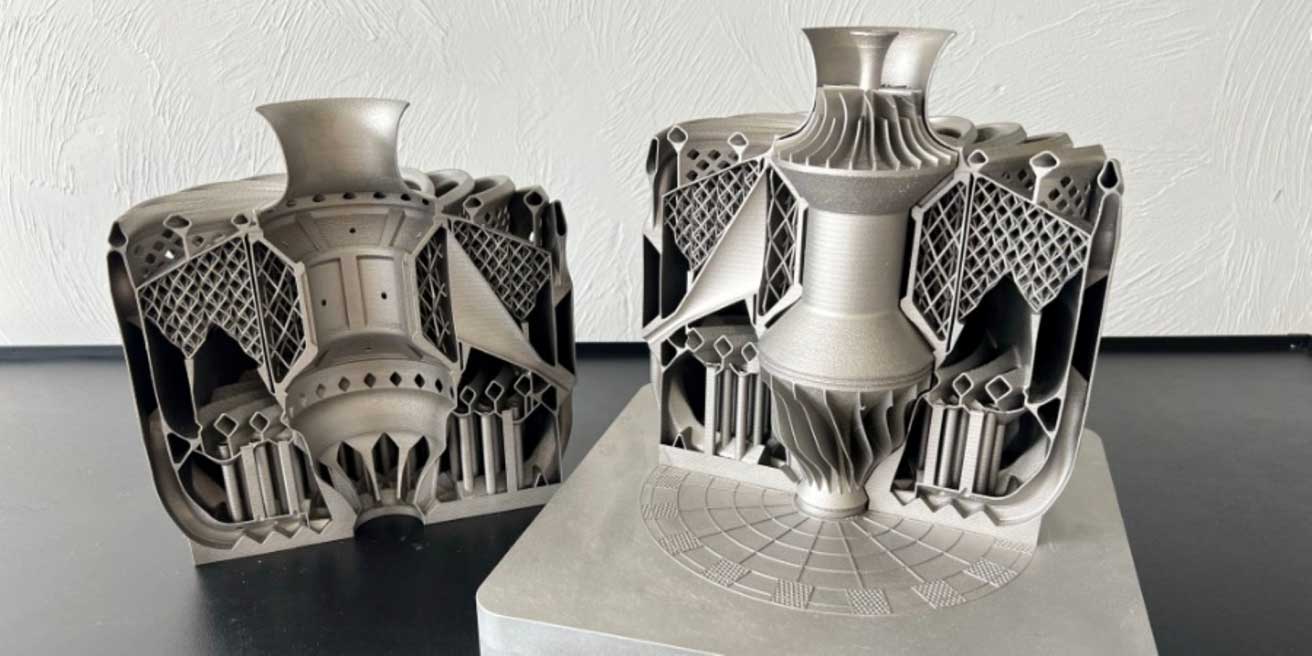
Contents
- Patented SPE technology for multi-material 3D printers
- First jet engine from the 3D metal printer
- Multi-material 3D printing system with unimagined possibilities
- Optimal sintering in 3D printing based on new gas mixtures
- Austenitic steel in metal powder for additive manufacturing
- 99% austenitic structure and industry diversity
- Crash safe 3D printing aluminum alloy for vehicles
- 3D metal printing with Ehla process economically viable for the first time
- Complex steel components from the 3D printer
- Additive manufacturing accelerates shape changes
Patented SPE technology for multi-material 3D printers
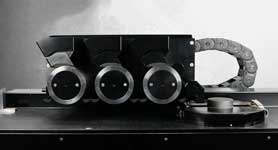 November 27.11.2023, XNUMX | The patented Selective Powder Deposition (SPD) technology from Schaeffler Aerosint enables the laying of homogeneous layers from several material areas arranged next to one another. The selective application of different powders brings the right material in the required quantity to the desired location.
November 27.11.2023, XNUMX | The patented Selective Powder Deposition (SPD) technology from Schaeffler Aerosint enables the laying of homogeneous layers from several material areas arranged next to one another. The selective application of different powders brings the right material in the required quantity to the desired location.
First jet engine from the 3D metal printer
11.07.2023 | PTC presented the world's first micro-turbo engine (picture above), which was completely manufactured with the 3D printer. The only assembly was developed in the CAD software Creo. It contains all rotating and fixed components. The engine was printed with an EOS 3D printer from the material Inconel, a nickel-based, heat-resistant nickel-chromium alloy. It weighs only 3,6 kg.
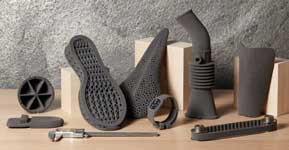 3D Printer Material | from plastic to metal
3D Printer Material | from plastic to metal
The development and 3D printing of a fully self-supporting micro turbo engine with a turbine that has an impressive speed of 50.000 rpm-1 achieved mark a groundbreaking advance in additive manufacturing. In contrast to previous engines, this model does not require complex assembly and the use of expensive components. This also enables demand-oriented production directly at the customer's site.
Israeli research project
The all-steel 3D printed engine is the result of a project by dr Ronen Ben Horin, VP of Technology at PTC and Senior Research Fellow at Technion - Israel Institute of Technology, and Beni Cukurel, Associate Professor of Aerospace at the Technion. It required years of intense scientific work Research in the field of jet propulsion as well as extensive expertise in innovative engine technology and design for 3D printing and additive manufacturing.
Why Creo as CAD software?
PTC chose Creo as their CAD software because:
- they lightweight construction supports: It does this with sophisticated lattice modeling and generative design to reduce material and weight while maintaining the same strength and performance as heavier and more material designs.
- they self-supporting geometries generated for 3D printing: Beam-based grids automatically optimize designs for 3D printing. Creo also supports self-supporting formula-driven grids, which can be combined with printability checks and modifiers. This makes the design adaptable for efficient metal 3D printing.
- they interoperable with 3D printers is: Creo CAD software is compatible with most 3D printers for printing and post-processing. It includes a 3D component design that ensures traditional machining can be performed for precise assembly. A variety of formats are available, including 3MF, to send 3D models to the various printing technologies. Users can easily create associative models for machining operations.
Multi-material 3D printing system with unimagined possibilities
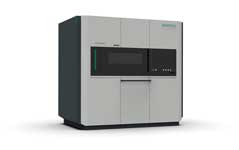 13.07.2023/XNUMX/XNUMX | the Schaeffler Group presented on the Automatica 2023 a novel system for additive manufacturing. The multi material 3D printers offer limitless potential for unique material combinations and functional integration, free design creation and fast market reactions in additive manufacturing.
13.07.2023/XNUMX/XNUMX | the Schaeffler Group presented on the Automatica 2023 a novel system for additive manufacturing. The multi material 3D printers offer limitless potential for unique material combinations and functional integration, free design creation and fast market reactions in additive manufacturing.
Optimal sintering in 3D printing based on new gas mixtures
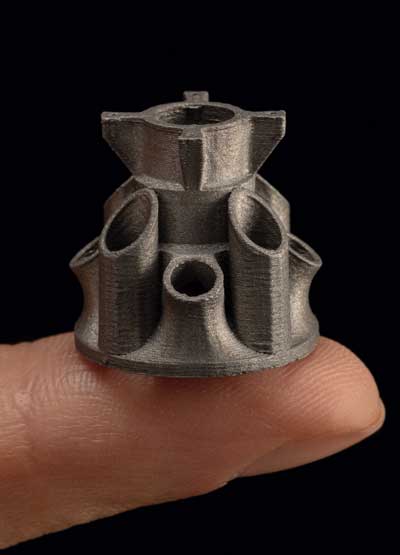 28.09.2020/3/XNUMX | The world's first office-friendly XNUMXD printer for metallic materials has lime optimized for sintering using a balanced argon-hydrogen mixture. The new gas mixture ensures the perfect atmosphere during the sintering process and guarantees stability and strength during the sintering process 3D pressure.
28.09.2020/3/XNUMX | The world's first office-friendly XNUMXD printer for metallic materials has lime optimized for sintering using a balanced argon-hydrogen mixture. The new gas mixture ensures the perfect atmosphere during the sintering process and guarantees stability and strength during the sintering process 3D pressure.
Linde offers the new gas mixture under the name ADDvance Sinter250 at. In Desktop Metal's Bound Metal Deposition process, it ensures optimal working atmospheres in sintering furnaces for shaping by the 3D printing process.
Desktop metal is an American company in the field of 3D printing processes. The ADDvance Sinter250 was developed for the European user to use in his studio system. This is the world's first office-friendly 3D printer for metal powder parts.
Linde supplies individual installation packages that facilitate the implementation of the Studio systems simplify and offers assistance in the project planning of gas supply systems. With the Liprotest Service, the company supports users in the safe handling of technical gases and 3D printing.
3D printing sintering for small businesses
The 3D printing studio system is suitable for use in smaller companies and in the office. It improves access to 3D printing capabilities over the typical laser printer. It is affordable and takes up little space.
In the Bound metal deposition process the atmospheric conditions during sintering ensure the component quality. Optimal mechanical and technological properties improve the properties of the sintering components. Without the right working atmosphere, oxidation processes can occur that cause surface discoloration and impair the stability of the component during the sintering process.
"Linde has long been a pioneer in the manufacture of innovative gas mixtures to optimize manufacturing processes," says Pierre Foret, Senior Expert Additive Manufacturing. "In this rapidly evolving world of additive manufacturing, we are excited to partner with a technology pioneer like Desktop Metal in the field to deliver ADDvance Sinter250 to their customers."
The desktop metal studio is suitable for designers, small workshops and larger users such as Automobilemanufacturers who produce prototypes and small batch production.
 3D printing service – online and fast
3D printing service – online and fast
"Linde has developed a standard gas offering that has been optimized for the Studio System and is able to offer this optimized solution to our European Desktop Metal customers," said Arjun Aggarwal, VP of Business Development & Product. "This enables us to expand our portfolio and create added value for our company."
The tailor-made argon-hydrogen mixture is for use in components made of high-alloy stainless Steels designed. But Linde also offers argon 5.0 for the production of parts from unalloyed and low-alloy steel as well as tool steels.
Austenitic steel in metal powder for additive manufacturing
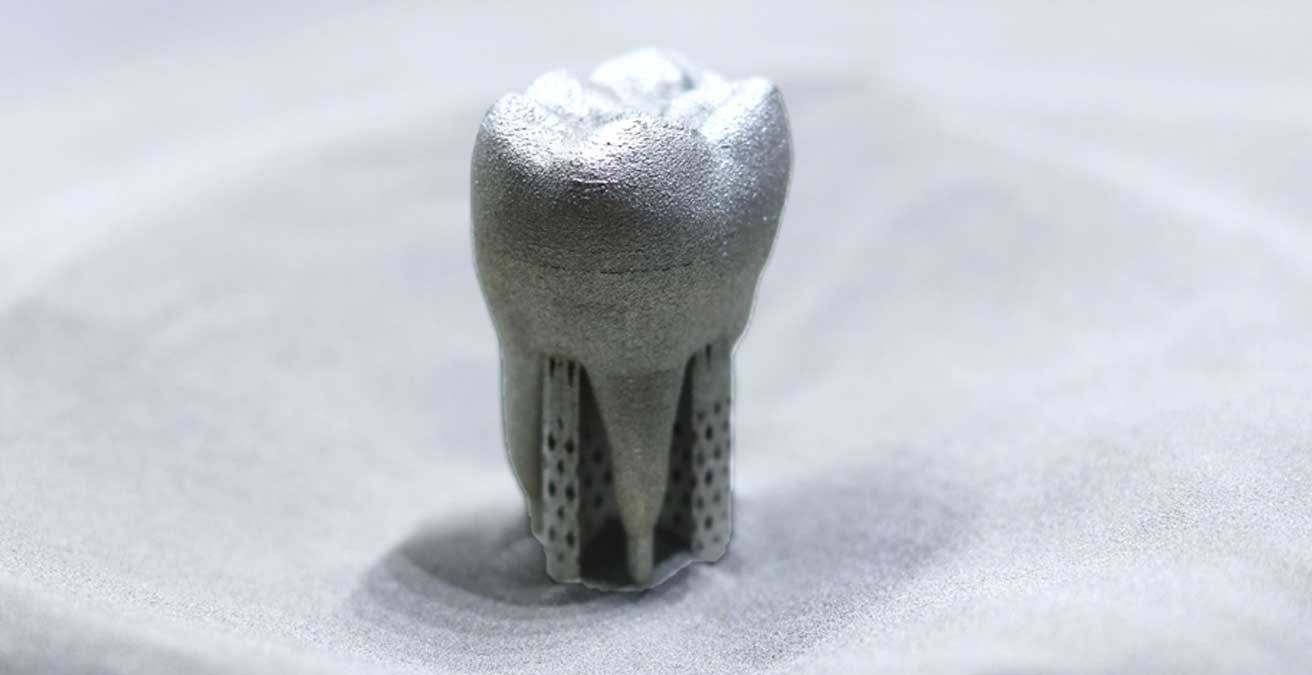
22.06.2022/XNUMX/XNUMX | the German stainless steel works (Schmolz + Bickenbach) offer with Medidur for the 3D Print a new metal powder based on austenitic steel, which is used for the Medical Technology was designed. The patent-pending material offers numerous optimizations of technical properties. With the austenitic steel powder Printdur HSA for metal 3D printing, a metal powder is also available for mechanical engineering, power plant technology, the automotive industry and other sectors.
Nickel-free steel powder for medical applications
Additive manufacturing and 3D printing are for the Medical Technology essential. It is used in implants, dentures, orthoses and prostheses. With Medidur, Deutsche Edelstahlwerke has developed the optimal steel powder for metal 3D printers. Such austenitic steel in powder form has been patented.
By using manganese, there is no nickel. The material is non-magnetic, corrosion-resistant and has high strength. This is particularly advantageous in medical technology. Employees and patients are not exposed to nickel.
From the leg prosthesis to individually adapted bone replacement parts, the additive manufacturing pioneering innovations in medical technology. Austenitic steel in the form of metal powders processed in metal 3D printers is the basis of all of this.
In relation to this, Deutsche Edelstahlwerke, as a pioneer in metal 3D printers, has placed a strong focus on applications in medical technology. The metal powder Medidur is printed on LPBF systems with typical 316L processing parameters.
Austenitic steel of superlatives
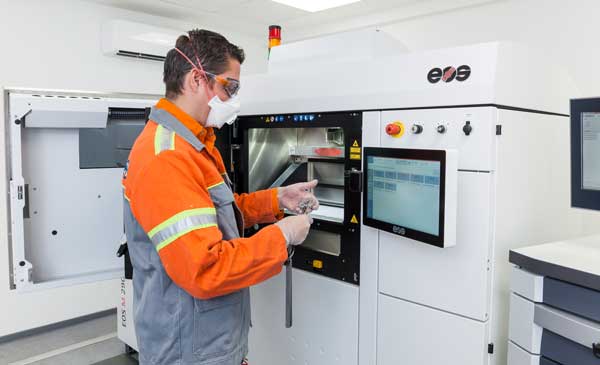 The nickel-free austenitic steel offers a significantly higher level compared to conventional austenite steels Tensile strength and Stretch limit. The material 316L has established itself as the standard steel in additive manufacturing, but compared to Medidur, the 316L offers a significantly lower hardness, the yield point and tensile strength are even twice as high with Medidur. On the basis of this, medical components can be designed with thinner walls and thus smaller.
The nickel-free austenitic steel offers a significantly higher level compared to conventional austenite steels Tensile strength and Stretch limit. The material 316L has established itself as the standard steel in additive manufacturing, but compared to Medidur, the 316L offers a significantly lower hardness, the yield point and tensile strength are even twice as high with Medidur. On the basis of this, medical components can be designed with thinner walls and thus smaller.
In addition, the Fatigue strength about 30% higher. This gives the medical components made of Medidur a significantly longer service life.
Last but not least, the high certifies Pitting Resistance Equivalent Number (PREN) of 36 the material has very good corrosion resistance. In the 3D printed state, Medidur is corrosion-resistant according to SEP 1877 method II (test for resistance to pitting corrosion) and according to ASTM G48 method E (test for resistance to intergranular corrosion).
Austenitic steel, nickel-free and contains manganese
The Manganese content In the austenitic Medidur, the topic of nickel allergy ends once and for all. Employees are not exposed to nickel when processing the metal powder. There are no safety precautions regarding the proportion of nickel in a material. Deutsche Edelstahlwerke manufactures the Medidur in its Krefeld plant. The certifications according to DIN EN ISO 9001 (quality management systems) and according to DIN ISO 13485 (quality management medical products) attest the DEW a consistently high quality of all in-house powder materials.
99% austenitic structure and industry diversity
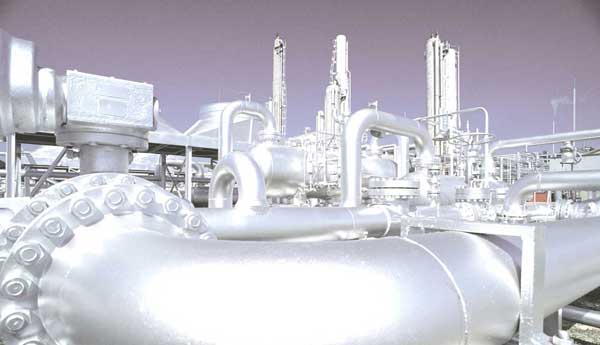
22.06.2020/XNUMX/XNUMX | Deutsche Edelstahlwerke expands its portfolio for additive manufacturing with Printdur HSA. The new material is produced using gas atomization Pharmacy, recycling, which has a 99% austenitic structure when printed. This austenitic steel is non-magnetic, nickel-free and offers significantly improved strength.
The metal powder is suitable for selective laser melting Laser powder bed fusion (LPBF). It can be easily processed on LPBF systems. Compared to typical austenitic steels, the austenitic steel offers advantageous properties such as a significantly increased yield point, tensile strength and hardness.
Corrosion resistance and branch variety
So far, steel 1.4404 (316L) has established itself as the standard steel in additive manufacturing. Compared to the Print major HSA however, it has a significantly lower level of strength. The yield point and tensile strength of the metal powder are twice as high.
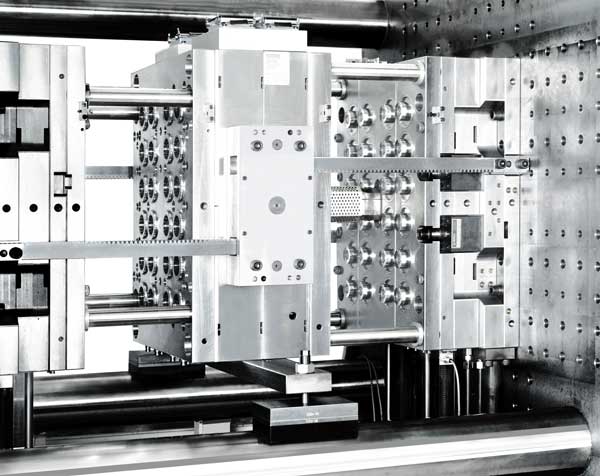 The height Pitting Resistance Equivalent Number (PREN) of 36 certifies that the new DEW powder has very good corrosion resistance. In the printed state, austenitic stainless steels are corrosion-resistant according to SEP 1877 method II (test for resistance to intergranular corrosion) and according to ASTM G48 method E (test for resistance to pitting corrosion).
The height Pitting Resistance Equivalent Number (PREN) of 36 certifies that the new DEW powder has very good corrosion resistance. In the printed state, austenitic stainless steels are corrosion-resistant according to SEP 1877 method II (test for resistance to intergranular corrosion) and according to ASTM G48 method E (test for resistance to pitting corrosion).
The new printed austenitic steel Due to its properties it is suitable for applications in mechanical engineering, Food industry, Chemical plants, pumps, power plant technology and Automotive industry.
Additive manufacturing cannot replace traditional mold construction, but 3D printing can increase manufacturing efficiency. So offers the 3D-metal printing advantages, especially in the production of complex shapes.
This includes components for prototypes, the production of cores, cavities or inserts for tools, matrices and molds for small series. The freedom of design and short production times have a positive effect here.
DEW customers as part of the process chain
When developing the metal powder for the metal 3D printer, the company involves its customers in the entire process chain. It begins with the idea for the alloy, through the production of metal powder, to the finished prototype and component through to large-scale production far beyond additive manufacturing out.
DEW already has a great deal of know-how in the production of Metalpowder for that Build-up welding. The steels are produced in powder form in the Krefeld plant, which is certified according to DIN EN ISO 9001 and IATF 16949. In this way, DEW guarantees consistently high quality for all in-house powders Materials.
Crash safe 3D printing aluminum alloy for vehicles
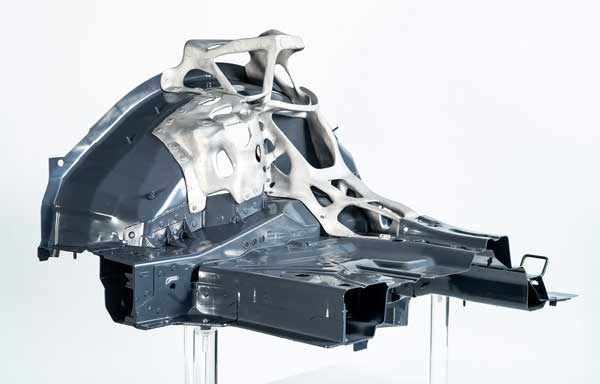
18.03.2020/3/XNUMX | Additive manufacturing and XNUMXD printing have enormous potential for new dimensions in lightweight construction. Currently meet the available 3D Print Aluminium Alloys do not yet meet the high requirements to be used in series production Automotive industry to be able to use.
Even with the current design of the process, only high-strength, but not ductile materialcharacteristic values are generated. edag has now developed the aluminum alloy Custalloy for metal 3D printing in vehicles as part of the Customat_3D research project funded by the BMBF with eight project partners.
In automotive engineering, for example, they count Crash performance and their variable usability for applications that are not yet feasible for today's 3D printing aluminum alloy.
However, the aluminum alloy developed by Edag and partners for the metal 3D printer is able to provide higher strength and higher elongation at break. The elongation at break is particularly important for a crash.
Who researched what?
In the last three years, the entire process chain from powder production to simulation and component development. The alloy was defined and the powders were manufactured by the Leibniz Institute for Material-Oriented Technologies (IWU) and Kymera International. The processing and process development in powder bed-based laser beam melting (LBM) was carried out at GE Additive, at Fraunhofer IAPT and at FKM Sintertechnik.
A corresponding simulation of the rapid cooling of the melt in the process was researched by Magma Giessereitechnologie and Fraunhofer ITWM. The performance was demonstrated at Edag Engineering and Mercedes-Benz with the support of Altair Engineering.
This holistic approach should make additive manufacturing accessible for series processes. The newly researched aluminum alloy can be used to establish heavily reduced components in the vehicle.
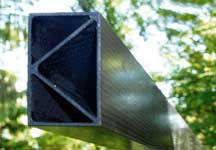 Materials with carbon fibers from algae and negative CO2 balance
Materials with carbon fibers from algae and negative CO2 balance
In a laboratory phase, different alloys experimentally examined with regard to properties. The most promising aluminum alloy was successfully tested and manufactured on different laser beam melting systems. What is special about the alloy is its versatility. A very wide range of properties can be created from just one alloy.
The properties can be flexibly adjusted using a downstream heat treatment. Material maps were generated from the determined material parameters, which were then optimized in the structure using the software Altair Optistruct were used. This allows the weight of components to be reduced with the same performance. What is special here is that the requirements from the additive manufacturing process, such as the alignment of the objects, can also be taken into account.
Components for different vehicle areas
Components from different areas of the Vehicle. With the dynamically highly stressed Wheel carrier and a complex component with high rigidity requirements from the wheel arch could effectively save weight. At some 30%, this was above the expected potential. Due to the additive manufacturing process, the component can be specifically adapted to the requirements of the vehicle using a load level model.
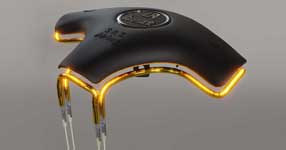 Infrared heater for efficient heat processes in industry
Infrared heater for efficient heat processes in industry
Hybrid processes such as laser deposition welding and Add procedures were examined with the new material. In the simulation, the processes on the microscopic level of the powder could be transferred to the macroscopic simulation of the component using representative elements. This results in a greatly reduced computing time. Properties such as internal stresses and distortions are made visible and reduced even before production.
The newly developed alloy is sold under the brand name Custalloy be conventionally available in a few months. The project partners are already drawing a positive conclusion. Due to the wide range of applications and the fact that joining technology, corrosion and other requirements of the automotive industry have already been verified, the aluminum alloy from the 3D printer is suitable for the first series applications.
All project goals were achieved. With the aluminum alloy, the associated processing and the proven simulation methods, the experts have effective tools for reducing vehicle weight and using 3D printing technology in series production.
3D metal printing with the Ehla process is economical for the first time
![]()
22.05.2019/XNUMX/XNUMX | Ponticon is co-manufacturing as part of a joint project Fraunhofer 3D printer metal for the Additive Manufacturing. They can be used to create 3D components and structures from the material Metal produce. That's how the company does it Ehla Process of the Fraunhofer Institute for Laser Technology ILT can be used for commercial series applications.
With the 3D printer metal, components can be printed with a additive process manufacture economically. This opens up completely new perspectives for 3D printing with metal.
What is the Ehla procedure?
The extreme high-speed laser deposition welding, in short Ehla The process is considered revolutionary. It enables very high feed speeds with high precision layer by layer. In contrast to conventional Laser Metal Deposition (LMD) technologies, metal powder is already melted in the air by the laser beam.
The metal powder, in liquid form, hits a small molten pool on the surface. So far, this technique z. B. for coating offshore Hydraulic Systemcylinders used successfully. In order to be able to use this particularly powerful process additively, the machine manufacturer Ponticon has the 3D printer Ehla PE3D
The company benefits from the high flexibility and lean processes of the system. Just four months after the start of the project, the special machine manufacturer's team had the right one High-performance kinematics developed. Only through this kinematics can the advantages of the Ehla process be transferred to the additive manufacturing of metal parts. Prototypes of the system are scheduled to go into operation in the second quarter of 2019.
Advantages of the Ehla process
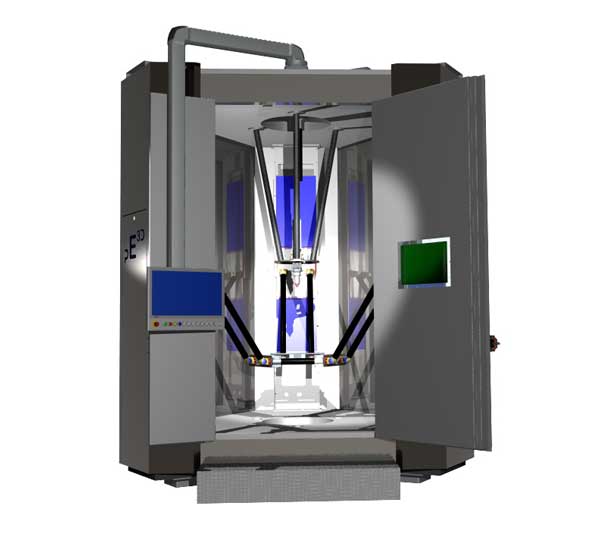 The Ehla 3D printer is called Key to productivity seen in the series production of metal components as well as in prototype construction. With process speeds of up to more than 3 m / s, it will be able to completely build precise individual metal parts in the 3D metal printer within a very short time.
The Ehla 3D printer is called Key to productivity seen in the series production of metal components as well as in prototype construction. With process speeds of up to more than 3 m / s, it will be able to completely build precise individual metal parts in the 3D metal printer within a very short time.
With rotating components, feed speeds of over 15 m / s can even be achieved. In addition, you can place Interface components connect with each other. Such interface components are finished components that are optimized for the process, such as bearing flanges or process connections.
Time-consuming reworking of interfaces can thus be reduced or avoided. A process that works in the classic LPBF procedure not possible. This clears the way for near-net-shape metal components in series production. This form of the orderweldings also allows the connection of different metals. Up to now unthinkable material mixtures enable completely new product properties.
Prototyping and on-demand manufacturing
These properties are particularly interesting in applications such as prototype construction, on-demand production, the manufacture of special and individual parts, as well as modification and expansion of existing individual parts. But also the Materialresearch receives completely new impulses with the previously impossible combination of different metals, which are also permanently welded together.
In addition, the low thermal influences on the workpiece surface become large Cooling rates reached. This is a basis for the production of amorphous metals, including metallic ones Glass mentioned.
Coatings reduce maintenance costs
In addition to the production and modification of individual parts, the system can also be used to coat existing parts. For example, the following are conceivable: Bronze on tool steel, stainless steel on aluminum or tungsten-containing alloys on gray cast iron. Parts coated with this process lead, for example, to reduced maintenance costs and are more durable and resistant. This saves resources - over the entire life cycle of a product.
Additive processes offer many advantages. Compared to about Metal casting process production takes place without tools and with significantly lower energy consumption. Long supply chains, transport routes and storage capacities are no longer required thanks to on-demand production. In addition, the Coating of components with the 3D metal printing Ehla system, sometimes environmentally harmful coating processes.
Application example of a brake disc
The experts at Fraunhofer ILT in the development of the Ehla process. With this fast process, 50 to 350 µm thin metal layers are applied economically and with a speed of up to 500 m / min. The process has already proven itself in many applications as a good alternative to hard chrome plating. Using the example of a brake disc, the video shows how homogeneously a metal coating can be applied.
Complex steel components from the 3D printer
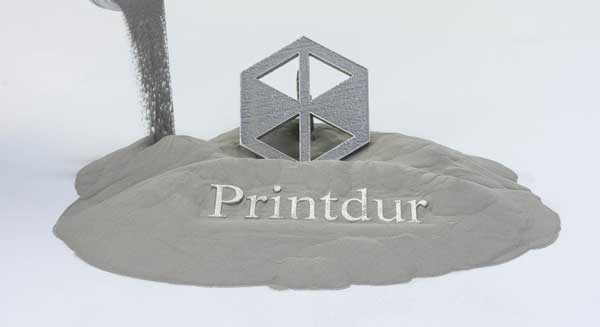 24.01.2019/XNUMX/XNUMX | the German stainless steel works DEW (Schmolz + Bickenbach), as a renowned powder manufacturer in the field of 3D printing, is pushing the next stage of development with its Printdur metal powder portfolio. Interested customers are included in the prototyping process. The complete manufacturing process is created together - from the idea to the alloy design to the finished product.
24.01.2019/XNUMX/XNUMX | the German stainless steel works DEW (Schmolz + Bickenbach), as a renowned powder manufacturer in the field of 3D printing, is pushing the next stage of development with its Printdur metal powder portfolio. Interested customers are included in the prototyping process. The complete manufacturing process is created together - from the idea to the alloy design to the finished product.
Atomize metal powders based on iron, nickel or cobalt
The company offers a wide range within its Printdur portfolio atomize metal powders based on iron, nickel or cobalt for the 3D printer metal.
For this purpose, the raw materials are liquefied in an induction furnace and added to a gas atomization system. As a result, the particles are shaped spherically. This guarantees excellent flow behavior and very good dosability of the powder. The in-house powders are therefore ideally suited for additive manufacturing.
From the idea to the end product
Additive manufacturing of metallic materials is used primarily in aviation Medical Technology, in the Toolsconstruction and in automotive lightweight construction. dr Horst Hill, head of the special materials department at Deutsche Edelstahlwerke, explains: “From your own alloy idea to the printed end product – we help our customers to implement it.
We proceed step by step: We define the requirements together, develop the material, implement the powder atomization, test and optimize the material and ultimately even support the recycling of the powder. We are also extremely flexible with regard to the order quantity: we deliver both small quantities and large quantities in tons.”
Additive manufacturing accelerates shape changes
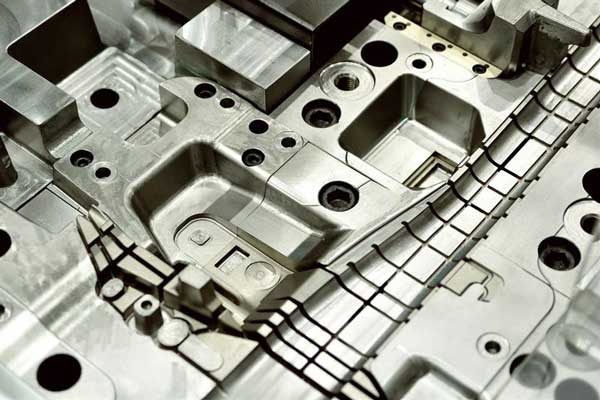 12.10.2016 | Through the use of DMD (Direct Metal Deposition), the process speed can be increased by 250 to 330% compared to manual laser deposition welding.
12.10.2016 | Through the use of DMD (Direct Metal Deposition), the process speed can be increased by 250 to 330% compared to manual laser deposition welding.
With the newly developed powder application nozzle from OR Lasertechnologie, the AM 2.0-capable laser welding systems can be upgraded in order to apply metallic layers fully automatically. The solution offers great potential for tool and mold making in small and medium-sized companies.
DMD as an alternative to laser deposition welding
laser cladding has established itself as a high-quality method for modifying and repairing injection molds. But now, with DMD using a powder application nozzle, a new additive process is available.
In contrast to conventional laser deposition welding, in which the material application with wire usually has to be carried out completely manually by a welder, the new process is fully automated, extremely precise and thus significantly increases productivity. This represents an affordable addition to existing technology, especially for small and medium-sized companies.
In the DMD process Pharmacy, recycling applied to an existing surface from a powder nozzle coaxial to the laser. The process can be fully automated and can be implemented on systems with an average output of around 300 W. It can be used on three-dimensional surfaces and thus offers a wide range of application options: for surface refinement, shape modification and changes or to restore damaged forming, stamping and injection molding tools to a new condition.
Application with HWF
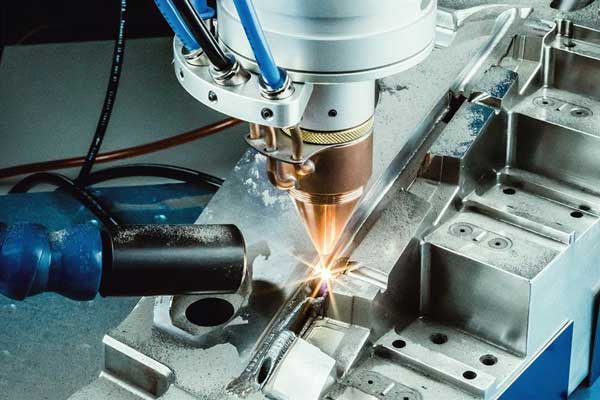 The medium-sized company also has the enormous advantages of the additive process HWF Hessian tool and mold construction in Eppertshausen near Frankfurt aM convinced. At HWF, for example, one of the tasks was to create a structure measuring 1.2343 x 300 x 20 mm (20 mm³).
The medium-sized company also has the enormous advantages of the additive process HWF Hessian tool and mold construction in Eppertshausen near Frankfurt aM convinced. At HWF, for example, one of the tasks was to create a structure measuring 1.2343 x 300 x 20 mm (20 mm³).
So far, such a structure with laser cladding constructed with filler wire to avoid the risk of cracking, deformation and change in metallurgical properties. The welder needed between 60 and 80 hours for this.
Today, the HWF company uses additive manufacturing and completes the structural design at a speed of 5000 mm³/h in layer thicknesses of 0,25 mm. This means that it takes just 24 hours and a laser power of only 400 W to build up the 120.000 mm³ of material. Elaborate reworking by means of milling or wire EDM is reduced to a minimum.
 3D printer for additive manufacturing
3D printer for additive manufacturing
One will be in advance CAD file, which contains the mold modification, is uploaded to "Orlas Suite", a powerful CAD/CAM software solution from OR Laser. After slicing the structure into different levels and determining the optimal strategy, the coordinate system is calibrated with three characteristic reference points and the laser parameters are transmitted to the system. The entire preparation takes an hour on average, and the process then runs fully automatically.
Adaptable during the process
 The laser system is also still during the process flexibly controllable and thus makes it possible to adjust the process parameters to changing requirements. For example, different powers can be selected at different times: initially higher build-up rates by setting a relatively high power and a high powder flow rate. A rather low power and flow rate towards the end of the process to create near-net-shape surfaces and keep post-processing to a minimum.
The laser system is also still during the process flexibly controllable and thus makes it possible to adjust the process parameters to changing requirements. For example, different powers can be selected at different times: initially higher build-up rates by setting a relatively high power and a high powder flow rate. A rather low power and flow rate towards the end of the process to create near-net-shape surfaces and keep post-processing to a minimum.
The result is a crack-free, high-quality structure that is optimally connected to the base material and has a hardness of 45 to 65HRC having. The time-consuming preheating of the mold insert is completely eliminated. The influence on the base material and the associated risk of metallurgical notches, which often occur with conventional repair welding, are significantly reduced. The mold insert is ready for use again after a short time.
Markus Fischer, Managing Director of HWF is convinced: “We can no longer imagine tool and mold making without laser welding. Incorporating the DMD process allows us to be more productive and break new ground in shape changes. The process is integrated into our process flow and the CAD/CAM landscape".
Competitive advantages for small and medium-sized enterprises
Material costs are also reduced because the DMD process near net shape geometry is achieved and only an extremely small cutting volume is incurred. The powder nozzle is available as an add-on and can be mounted on existing laser welding systems. These are AM 2.0 capable and can be programmed using the CAD/CAM software. "We are convinced that this technology will achieve significant competitive advantages, especially for small and medium-sized companies." says Markus Wolf, Head of R&D at OR Laser. "With our powder nozzle, a conventional system can be upgraded in just a few minutes and becomes a powerful, cost-effective tool for additive manufacturing".
You might also be interested in...

Artificial Intelligence | trends and developments
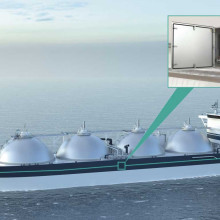
Green hydrogen on the advance in Germany
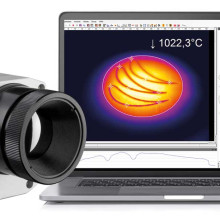
Infrared camera optimizes Laser Powder Bed Fusion 3D printing
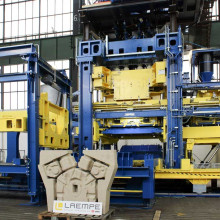
Profile rail guide using modern foundry technology from Laempe
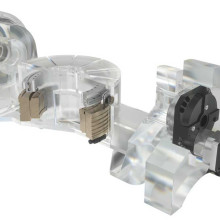
Planetary gear + strain wave gear precision from Schaeffler
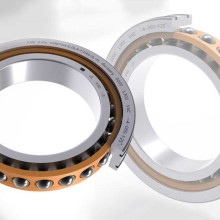
spindle bearing | The Vacrodur high-performance elements
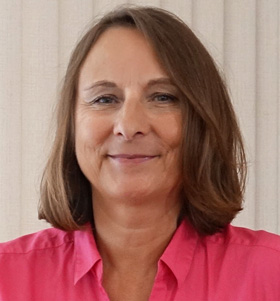
Angela Struck is editor-in-chief of the development scout and freelance journalist as well as managing director of Presse Service Büro GbR in Ried.
